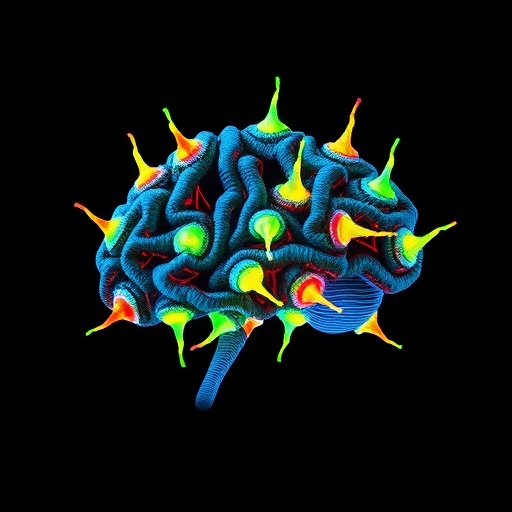In a groundbreaking development in the realm of neuromorphic electronics, an interdisciplinary research team has successfully engineered a new class of organic photoelectrochemical transistors (OPECTs). Led by Professor Francesca Santoro and Dr. Valeria Criscuolo from the esteemed Institute of Biological Information Processing – Bioelectronics at Forschungszentrum Jülich, the researchers collaborated closely with notable colleagues from RWTH Aachen University, including Professor Daniele Leonori and Junior Professor Giovanni Maria Piccini. The results of their innovative work have been unveiled in the prestigious journal Advanced Science, marking a significant stride in the quest to mimic the brain’s synaptic behavior through electronic devices.
The human brain is a marvel of biological engineering, adept at processing information, learning, and forming memories, all while adapting its neural connections for enhanced performance over time. This core functionality is something scientists have aimed to replicate in electronic circuits, a concept broadly referred to as neuromorphic computing. By developing materials that can not only react to external stimuli but also exhibit learning capabilities, researchers move closer to blurring the lines between biological processes and artificial systems.
What sets this new technology apart is its dynamic tunability, achieved through meticulous chemical adjustments. The team’s approach facilitates the customization of the material’s characteristics, enabling it to be extraordinarily sensitive to light or to provide stable signal transmission as required. This flexibility dramatically expands the potential applications of OPECT technology. It opens the door to innovative possibilities, such as creating a direct interface between advanced electronic systems and biological nerve cells, which could significantly impact medical devices, including visual prostheses and sophisticated optical sensors.
Moreover, the implications for future brain-machine interfaces are vast and could lead to more intuitive communication between humans and robotic systems. The devices operate with low power consumption, making them an eco-friendly alternative to traditional electronic components. This energy efficiency, coupled with their adaptable nature, positions these transistors as front-runners in future technological landscapes, particularly in fields requiring intricate interaction with biological systems.
To ensure the devices can function effectively within biological contexts, such as integrating with human nerve tissues or ocular structures, the chosen material exhibits biocompatibility and operational functionality at human body temperature. The incorporation of a specially modified plastic known as PEDOT:PSS, combined with innovative light-sensitive molecules, plays a crucial role in this research. This combination not only permits efficient electrical conduction but also maintains a soft and flexible profile, which is essential for merging electronic applications with biological tissues seamlessly.
In the long run, this pioneering research initiative holds the promise of yielding novel treatments for debilitating retinal diseases and age-related visual disorders. However, the path from laboratory innovation to clinical application is fraught with challenges. The researchers are keenly aware that rigorous assessments are needed to confirm the safety and compatibility of their technology with living tissues. They are undertaking extensive in vitro analyses, performing meticulous laboratory tests outside the body to evaluate the interactions between the developed materials and nerve tissues.
By deploying these analyses, the team aims to gather comprehensive data on how the materials react and adapt within biological environments. The ultimate goal is to build a robust set of evidence that demonstrates the transistors’ safety and efficacy, paving the way for potential human applications. The results from these studies will inform further development and refinement of the technology, ensuring that it meets the necessary medical standards before reaching patients.
Professor Francesca Santoro, who has led the Chair of Neuroelectronic Interfaces since January 2022, is particularly excited about the multitude of pathways this research may unlock. The collaboration with the Research Centre Jülich reflects a broader commitment to interdisciplinary science, combining insights from biology, engineering, and materials science. This multifaceted approach not only enhances the likelihood of success but also fosters a rich environment for innovation.
The implications of these advancements could extend beyond medical applications, fostering a new generation of computing technologies that integrate seamlessly with human cognitive processes. As these organic photoelectrochemical transistors evolve, they might be crucial to developing smarter, more responsive devices that learn and adapt in real-time, mirroring the adeptness of human memory and processing.
Being at the forefront of this cutting-edge research signifies a profound responsibility. The researchers are acutely aware of the ethical considerations surrounding the integration of advanced technologies with living systems. They are committed to conducting their work with the utmost care, ensuring that societal implications are thoughtfully addressed as this field continues to progress.
This research is poised to take significant steps forward in how we understand the interplay between biological systems and technology, offering a glimpse into a future where machines and humans may collaborate in unprecedented ways. As the scientific community eagerly anticipates further developments, the groundwork laid by this research team could very well influence generations of biocompatible technologies to come.
The publication of their findings in Advanced Science not only acknowledges the significance of their work but also serves as a catalyst for ongoing dialogue regarding the future of neuromorphic devices and their integration into biomedical applications. Each step in this journey is vital to ensuring that such technologies are safe, effective, and beneficial for society as a whole, allowing for a brighter future where human health and technological advancement go hand in hand.
Subject of Research: Neuromorphic Electronics, Organic Photoelectrochemical Transistors
Article Title: Designing Light-Sensitive Organic Semiconductors with Azobenzenes for Photoelectrochemical Transistors as Neuromorphic Platforms
News Publication Date: 29-Jul-2025
Web References: Advanced Science
References: Not applicable
Image Credits: Not applicable
Keywords
Neuromorphic Electronics, Organic Semiconductors, Photoelectrochemical Transistors, Biocompatibility, Advanced Science.




